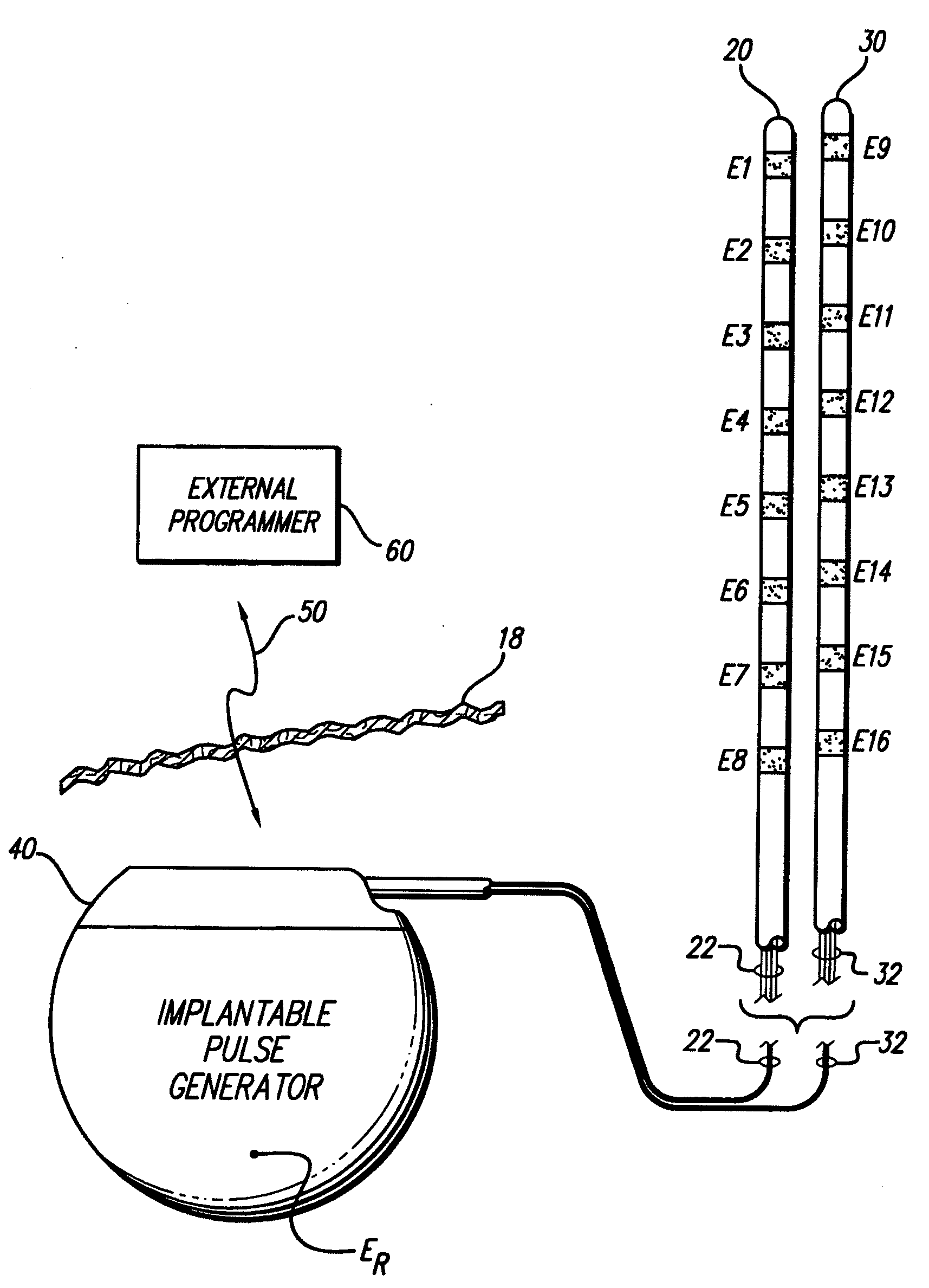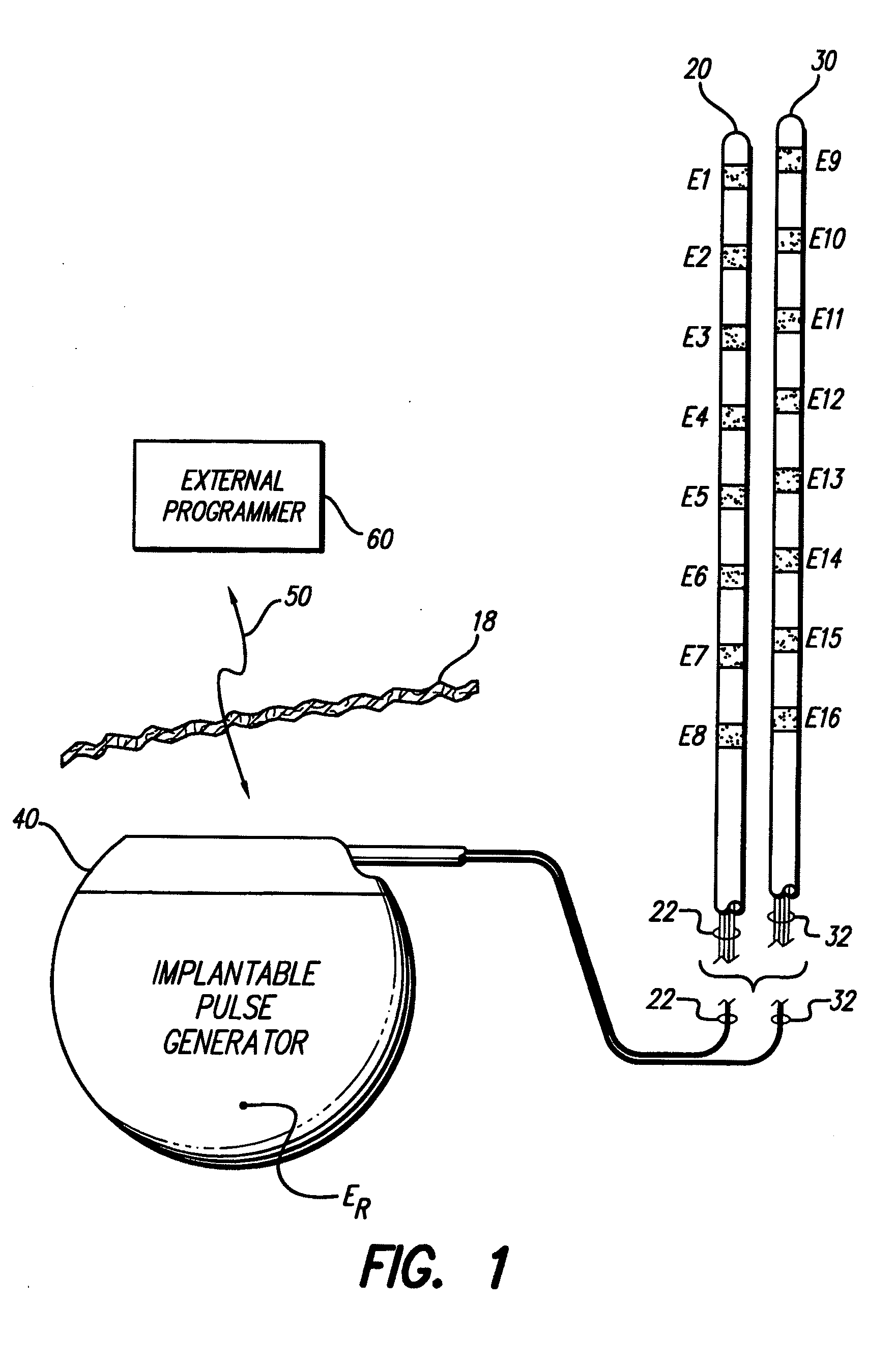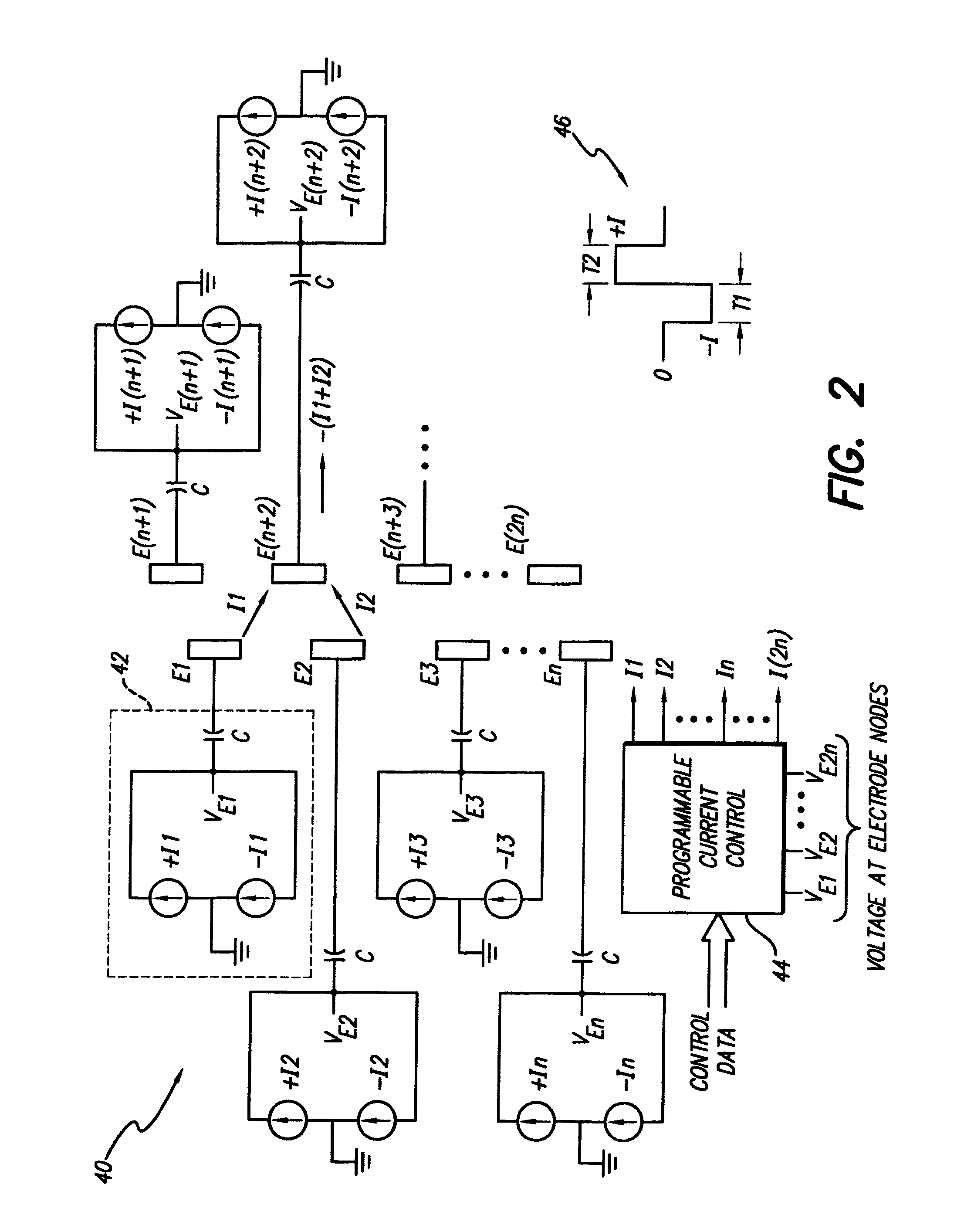Apparatus and method for determining the relative position and orientation of neurostimulation leads
a technology of neurostimulation and apparatus, applied in the field of neurostimulation systems, can solve the problems of inability to obtain images, inability to accurately determine the relative position and orientation of neurostimulation leads, and inability to meet the needs of patients,
- Summary
- Abstract
- Description
- Claims
- Application Information
AI Technical Summary
Benefits of technology
Problems solved by technology
Method used
Image
Examples
Embodiment Construction
[0023]The following description is of the best mode presently contemplated for carrying out the invention. This description is not to be taken in a limiting sense, but is made merely for the purpose of describing the general principles of the invention. The scope of the invention should be determined with reference to the claim(s).
[0024]The present invention uses: (1) interelectrode impedance (one technique or embodiment) or (2) measured field potentials (another technique or embodiment) to determine the relative orientation of one electrode on an implanted lead to other electrodes on the implanted lead or adjacent implanted leads in the spinal column or other body / tissue location.
[0025]Before describing the two techniques, either of which may be used, it will be helpful to first briefly provide an overview of a representative neurostimulation system of the type with which the present invention may be used. A representative neurostimulation system is illustrated in FIG. 1. Such syst...
PUM
 Login to View More
Login to View More Abstract
Description
Claims
Application Information
 Login to View More
Login to View More - R&D
- Intellectual Property
- Life Sciences
- Materials
- Tech Scout
- Unparalleled Data Quality
- Higher Quality Content
- 60% Fewer Hallucinations
Browse by: Latest US Patents, China's latest patents, Technical Efficacy Thesaurus, Application Domain, Technology Topic, Popular Technical Reports.
© 2025 PatSnap. All rights reserved.Legal|Privacy policy|Modern Slavery Act Transparency Statement|Sitemap|About US| Contact US: help@patsnap.com



